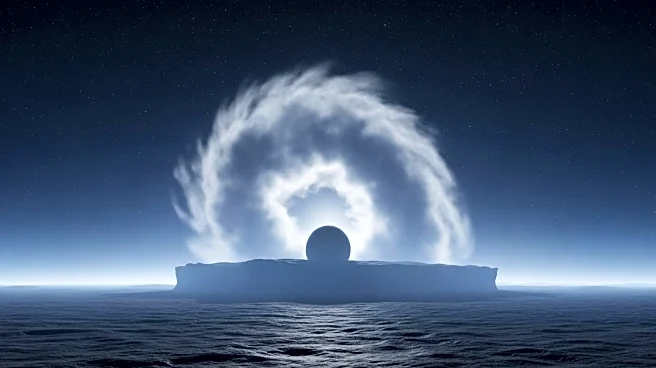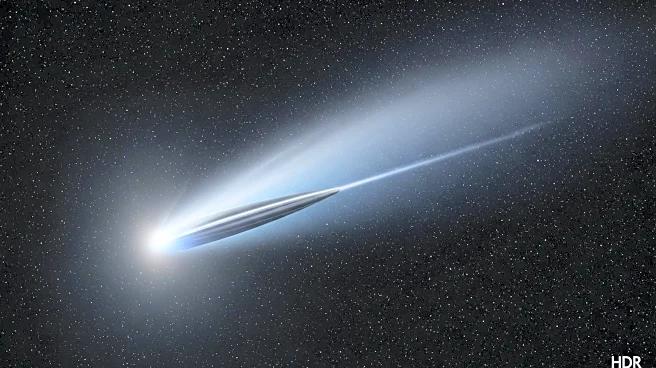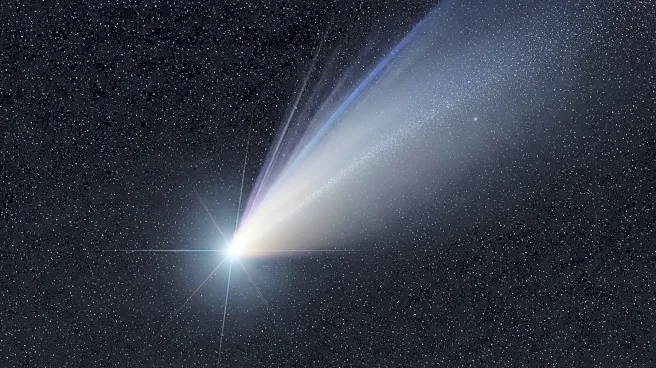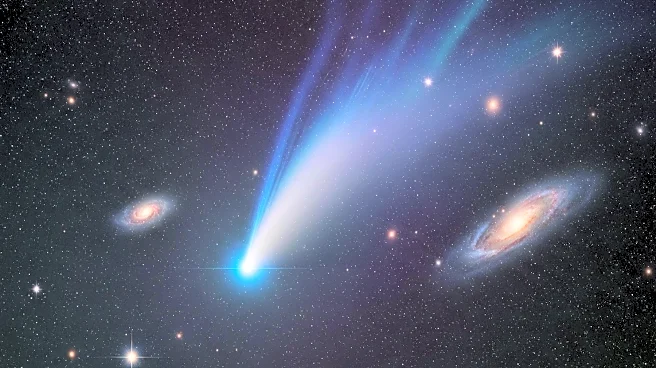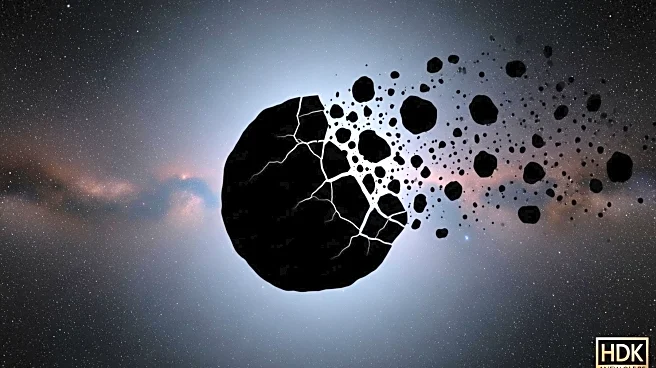What's Happening?
Scientists have discovered methane gas on the dwarf planet Makemake, suggesting that it is a dynamic icy world rather than an inactive remnant of the outer solar system. The discovery was made by a team led by the Southwest Research Institute using NASA's James Webb Space Telescope. Makemake, one of the largest and brightest trans-Neptunian objects, is now the second such object after Pluto to have a confirmed presence of gas. The methane detection was achieved by identifying a spectral signature of solar light re-emitted by methane molecules. This finding indicates that Makemake may have a tenuous atmosphere or experience transient activities similar to cometary sublimation or cryovolcanic plumes. The surface pressure of this potential atmosphere is extremely low, about 100 billion times below Earth's atmospheric pressure.
Why It's Important?
The detection of methane on Makemake is significant as it challenges previous assumptions about the dwarf planet's inactivity and suggests ongoing dynamic processes. This discovery could reshape understanding of trans-Neptunian objects and their potential atmospheres, influencing future research and exploration strategies. The presence of methane may indicate geological or cryovolcanic activity, which could provide insights into the evolution of icy bodies in the solar system. Understanding these processes is crucial for comprehending the broader dynamics of the solar system's outer regions and the potential for similar activity on other distant celestial bodies.
What's Next?
Future observations using the James Webb Space Telescope at higher spectral resolution are planned to determine whether the methane arises from a thin bound atmosphere or from plume-like outgassing. These observations will help clarify the nature of Makemake's activity and its atmospheric characteristics. Continued research may lead to new models of atmospheric dynamics on dwarf planets, potentially influencing the search for similar phenomena on other trans-Neptunian objects. The findings could also impact the planning of future missions aimed at exploring the outer solar system.
Beyond the Headlines
The discovery of methane on Makemake raises questions about the potential for other volatile compounds on similar distant bodies, which could have implications for understanding the chemical diversity and evolution of the solar system. The presence of a tenuous atmosphere or transient activity could suggest that other dwarf planets might also harbor dynamic processes, challenging existing models of their formation and stability. This could lead to a reevaluation of the criteria used to classify celestial bodies in the solar system.

